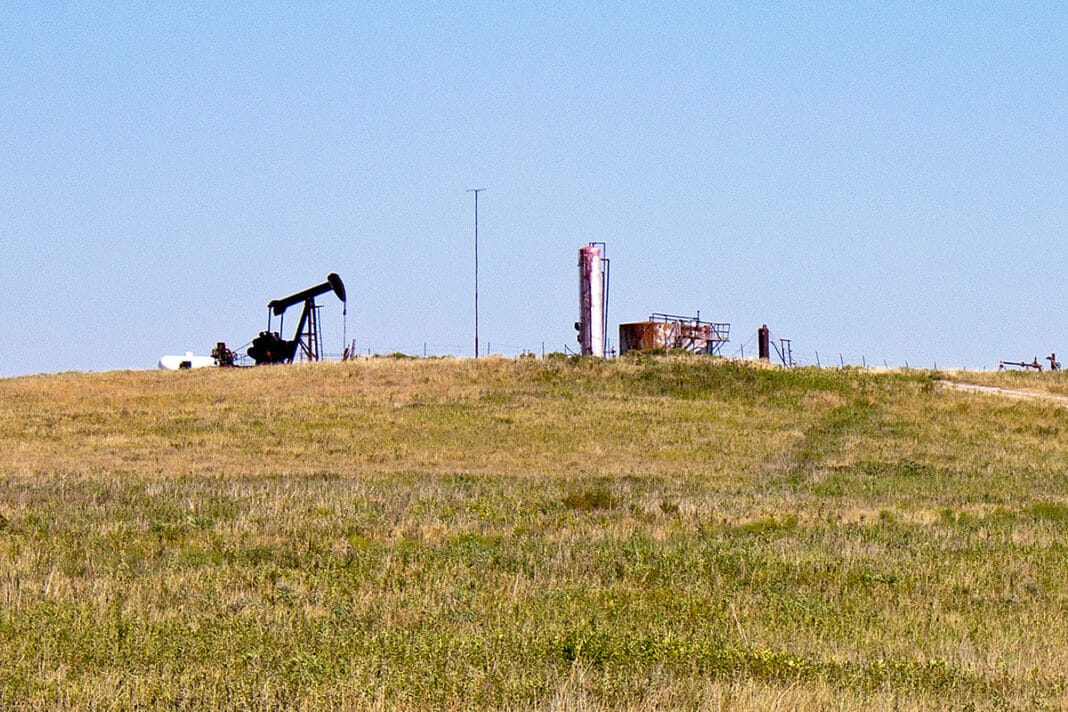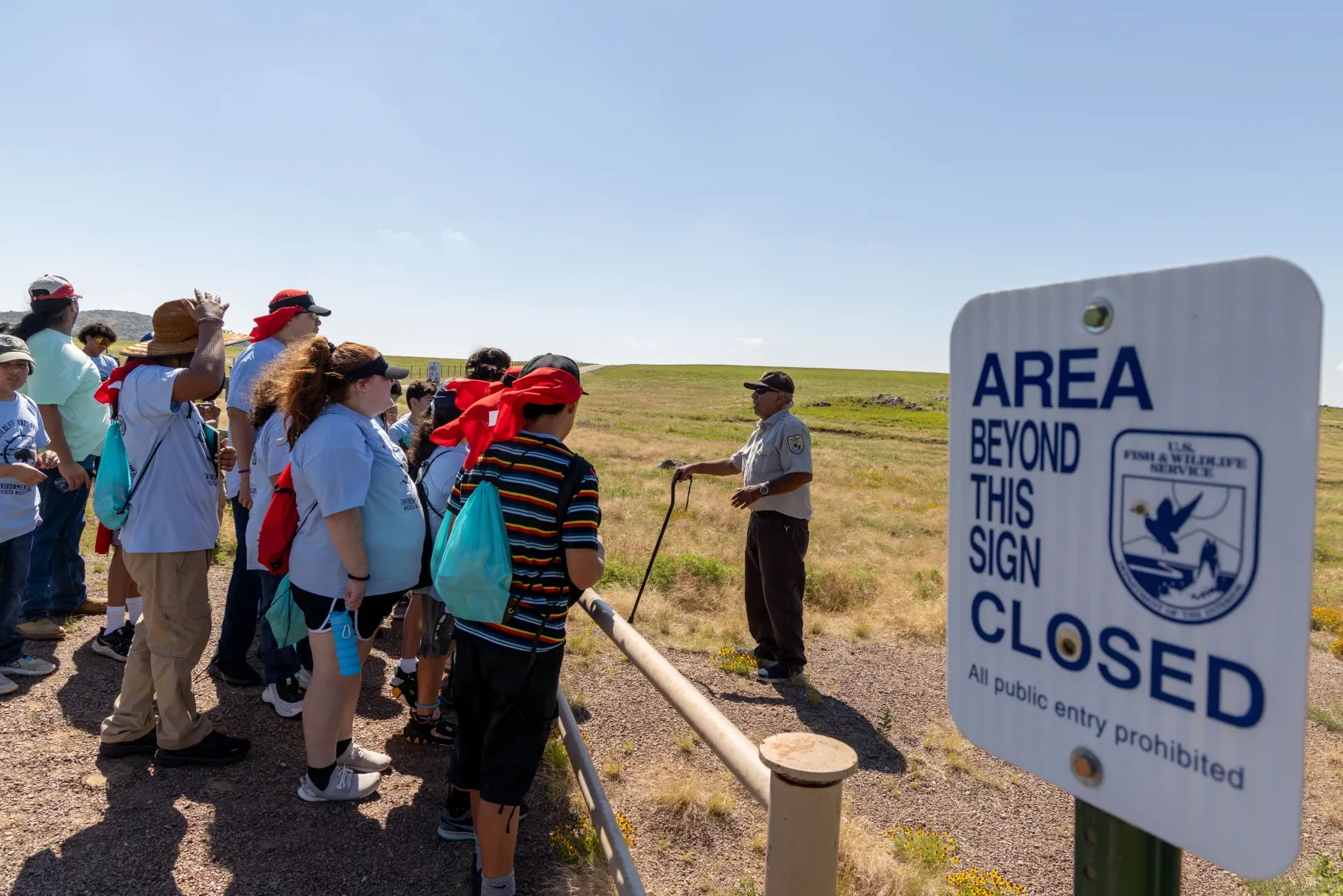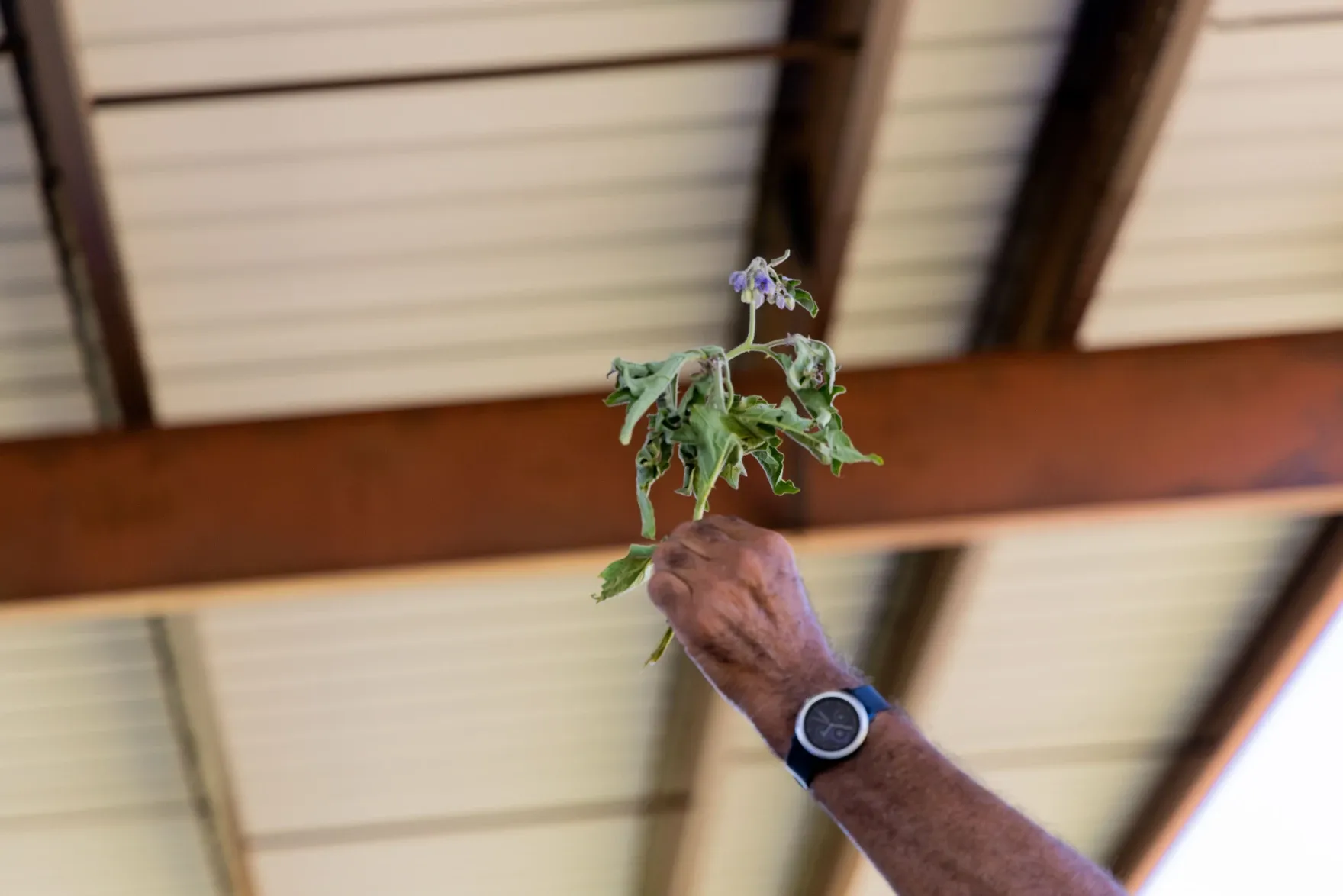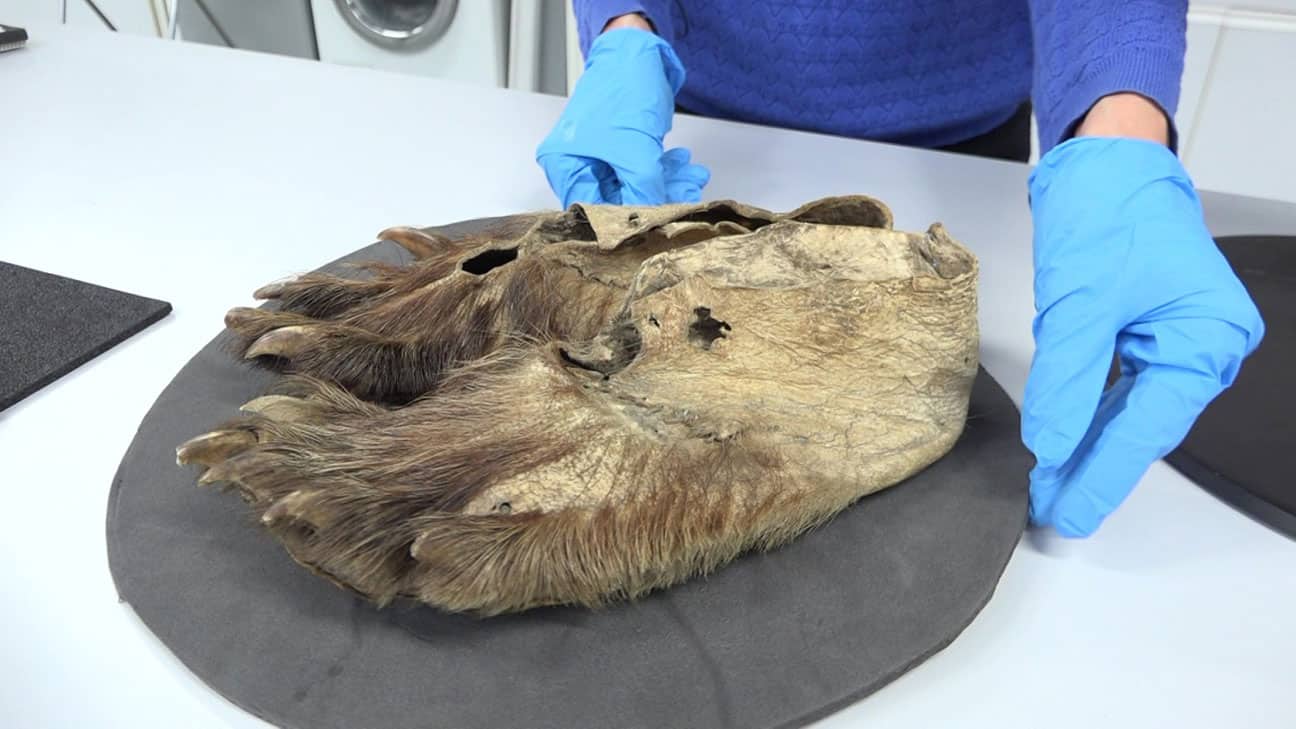

Northern District Court orders oil and gas production can resume

An opinion in the Hayes II case delivered a victory to the Osage Minerals Estate last month when it said that halting oil and gas production wasn’t the right option despite the U.S. government violating a previous environmental order.
The U.S. District Court for the Northern District of Oklahoma issued a decision resolving all remaining issues in Hayes v. Haaland case.
The ruling, issued May 1, brings the Hayes II case to a close after more than 10 years of litigation.
Osage Minerals Council Chairman Everett Waller said the ruling was a significant victory.
“These well-funded surface owners are trying to shut down our remaining oil and gas production that puts food on our table and pays the heat bill. The Council will always fight to protect our interests,” Waller said in a press statement.
The suit was brought on behalf of Paul Hayes, who owned 475 acres of surface land in Osage County. In 2012, Chaparral Energy and the OMC entered into a mining lease beneath his property. In 2013, another lease agreement was made between the OMC and Chaparral. Both leases were approved without the Bureau of Indian Affairs performing a National Environmental Policy Act (NEPA) analysis (Leasing PEA).
Finally, in 2014 the Bureau performed a Leasing Programmatic Environmental Assessment and issued a Finding of No Significant Impact (FONSI).
Two years later Hayes went to court to get the wells shut down because he believed there wasn’t a thorough analysis done by the BIA under NEPA. The court then ruled in the surface owner’s favor saying the BIA had failed to comply with NEPA.
The decision before the court was whether it is appropriate to shut down oil and gas wells permitted in 2012 and 2014 and issue an injunction. Last month, they ruled in favor of the Osage Minerals Council and the United States. The ruling could have affected oil and gas production reservation-wide because of the NEPA regulations the BIA is operating under.
The BIA will have to go back and do more of an environmental analysis, however, production can continue.
“…the court finds that the appropriate remedy is to remand the approval of the Leasing PEA and the FONSI, as well as the decision to approve the two leases at issue here, to the BIA without vacatur. Further, the court finds that an injunction is inappropriate,” wrote Judge Jane A. Restani for the Northern District of Oklahoma.
Judge Restani said issuing an injunction would impact the economy and risk damaging the reservoir and would have, “no impact upon the BIA’s ability to comply with NEPA.”
The court found that the surface owners didn’t provide enough evidence to convince the judge there would be significant environmental harm.
“Here, there is no evidence of environmental harm, just the risk of such with no evidence to indicate that the risk is particularly high or imminent … however, there would be economic and potentially environmental harm if the court were to issue an injunction to shut in the wells,” Judge Restani wrote.
Originally, the Minerals Council was not aware of this case until recently and argued that they needed to be included and that the surface owners named in the case – David P. Hayes for the Paul B. Hayes Family Trust were violating the sovereignty of the Osage Minerals Council and their managerial role in the oil and gas estate.
The OMC is now working with the BIA to come up with a plan to resolve permitting issues as soon as possible.
The surface owners can appeal the decision 60 days after the May 1 ruling was issued.

Comanche, Caddo Nations teach environment, culture to Indigenous youth in Wichita Mountains

Dozens of Indigenous children deepened their environmental and cultural knowledge at the Wildlife Explorers Environmental Camp in southwest Oklahoma.
By Sarah Liese, KOSU
The Caddo Nation and Comanche Nation partnered together, launching a two-day youth camp last week at the Wichita Mountains Wildlife Refuge near Lawton.
Environmental Education Specialist at the Wichita Mountains Wildlife Refuge and Comanche citizen Nick Plata led discussions about wildlife conservation and the importance of cultivating a relationship with the Earth.
“It's just like if you have friends, you want to get to know more about them,” Plata said to the campers. “You want to spend quality time with them. So, with the Earth, it's the same thing.”

Plata explained this relationship can harness good energy for those who take the time to get to know the planet and the living things.
“And if they do, there is an energy on this earth that can be corralled, and it can be used in a positive way for Native people,” he said. “And it's there for us, for the taking. All we gotta do is build that relationship.”
On the first day of the camp, participants made medicinal tea, pinch pots, and medicine bags. They also learned the responsibilities of refuge firefighters, how to set up and break down teepees, the uses of local plants and water testing.
On the second day, campers engaged in a scavenger hunt, listened to an elder’s story and toured the refuge, which spans about 60,000 acres and is home to many animals including buffalo, elk and deer.
Camp organizers said activities were funded by a Bureau of Indian Affairs youth initiative grant — something both tribal environmental directors were thankful for.
“When this funding came available, we thought it, this is our opportunity,” Josh Worcester, Caddo Nation’s Environmental Protections Director, said. “So, we threw ideas back and forth at each other. ‘How can we get the younger generation wanting to be outdoors, wanting to protect the environment, wanting to keep that going on for the next generation?’”
Christina Cooper (Apache), director of environmental programs at the Comanche Nation, said tribal nations will use lessons learned here with future programs.
“We will be doing other activities this summer with the older kids and with the younger kids,” Cooper said. “We plan on exposing them to different environmental aspects.”
Cooper said high schoolers can participate in the next program, which is in the works for July.
Cooper and Worcester hope to continue the Wildlife Explorers Environmental Camp in the future. As Cooper said, environmental programs are rare in Southwest Oklahoma, so camps like this fill a need in their area.
Comanche Cares Hosting Annual Back-to-School Supplies Drive

Donations to benefit Southwest Oklahoma students
LAWTON, Okla. (June 13, 2024) – Comanche Nation Entertainment’s community giving initiative, Comanche Cares, is once again stepping up to help Southwest Oklahoma students get ready for the upcoming school year. Its annual School Supplies Drive is now accepting donations at all Comanche Nation Entertainment properties Tuesdays through Thursdays, between noon and 10 p.m. until July 25.
“The school supplies drive is a way for us to work together in supporting our local students,” said Steven Doyle, CEO of Comanche Nation Entertainment. “The generosity of our team members, guests and the wider community is what provides our students with access to the necessary resources to succeed in the classroom.”
Donations can be dropped off at the following locations:
· Comanche Nation Casino in Lawton, 402 SE Interstate Dr
· Comanche Red River Hotel Casino in Devol, 196747 Highway 36
· Comanche War Pony Casino in Devol, 250652 E 2000 Rd
· Comanche Star Casino in Walters, 263171 Highway 53
· Comanche Spur Casino in Elgin, 9047 U.S. Highway 62
Comanche Rewards Club members who contribute supplies will receive up to $50 in Comanche Credit upon presenting their donation receipt. The offer is redeemable once per member, per day, per property.
For more information on how to contribute to the Comanche Cares School Supplies Drive, visit www.comanchenationentertainment.com.
ABOUT COMANCHE CARES
Comanche Cares is a community giving initiative from Comanche Nation Entertainment. Comanche Cares organizes charitable events year-round, with drives for school supplies, food and toys. For more information on the program and how to donate, visit www.comanchenationentertainment.com.
Choctaw Cultural Center, French Museum Partner Again

Historic Tribal Items in New Exhibit
DURANT, Oklahoma – On September 18, 2021, a collection of Choctaw artifacts from the 1700s went on display in the Versailles Public Library in Versailles, France. The exhibit featured part of the Musée du quai Branly-Jacques Chirac’s French royal collections of North America. In a unique collaboration, staff from the Choctaw Nation of Oklahoma’s Historic Preservation Department assisted in its preparation. Now, those items will be on display in Choctaw Country for the first time in three centuries.
In 2021 it was called “La Curiosité d’un Prince” or “An Inquisitive Prince – The Fate of the Ethnographic Cabinet of the Count of Artois.” That successful effort of the two nations – and the desire for Choctaw people to see these items on the Choctaw Reservation – led to the creation of the new exhibit “Okhvta Chito Okhoatali: Choctaw and French Transatlantic Legacies.” “Okhvta Chito Okhoatali,” Choctaw for “To Cross the Ocean” opens to the public at the Choctaw Cultural Center on Saturday, July 6.
Unlike many other European nations, when French explorers arrived in Choctaw homelands in 1699, the French and the Choctaw became respectful friends, allies in war, and trading partners. Items in the exhibit are believed to have been received in trade. Choctaws were largely settled in what became the state Alabama, and a major French trade center was in “Old Mobile.” While Choctaws were France’s largest Native trading partner, trade was also conducted with other tribes in the southeast part of North America. However, the style and design of the objects in the exhibit indicate that most are likely Choctaw in origin. In addition, archaeological items on loan from the University of South Alabama have been contributed and provide further understanding of the alliance between the two nations.
Visitors to the exhibit can expect to see exceptional pieces, including a pair of bear paw moccasins, a man’s beaded trade cloth legging, a finger-woven bison hair-and-bead sash, shell and trade bead jewelry, a gar fish skin quiver, rivercane darts, and a painted hide.
“Okhvta Chito Okhoatali” runs July 6 through November 30. Hours at the Choctaw Cultural Center, 1919 Hina Hanta Way in Durant, are 10 a.m.-5 p.m. Tuesday through Saturday and closed Sunday and Monday. Regular admission prices apply, including complimentary admission for Choctaw tribal members and cultural center members. In addition, the Hvshi Gift Store and Champuli Café will be open. Visit choctawculturalcenter.com.




